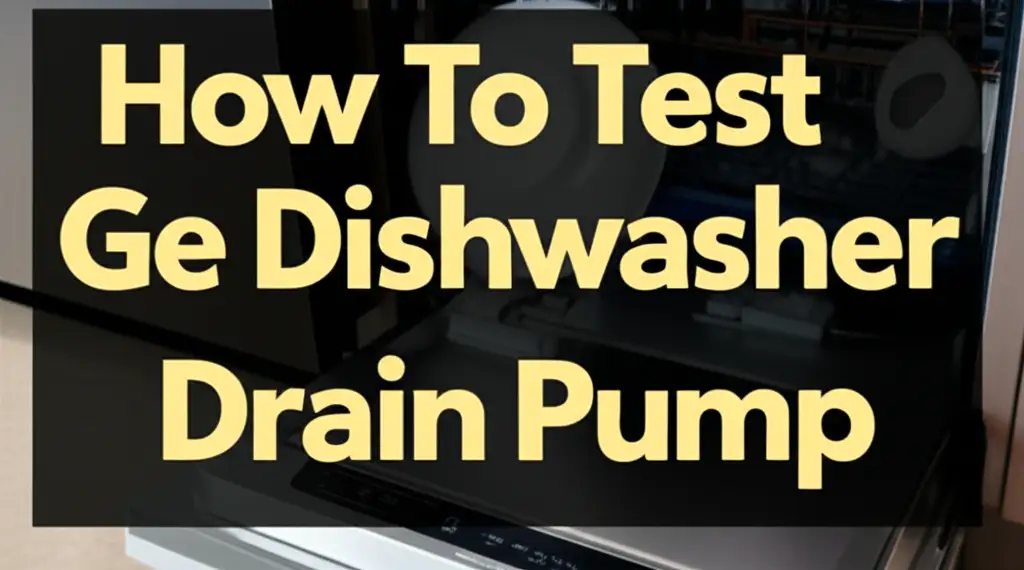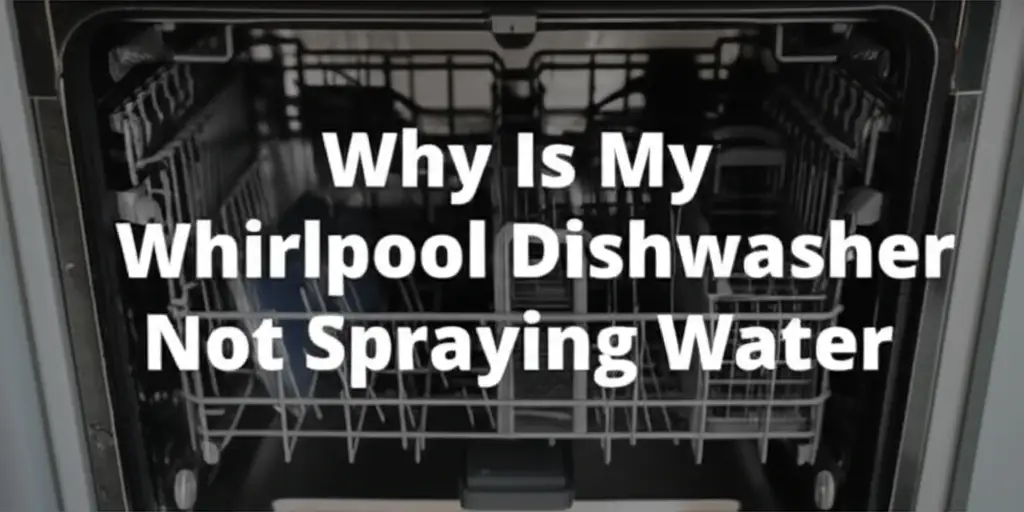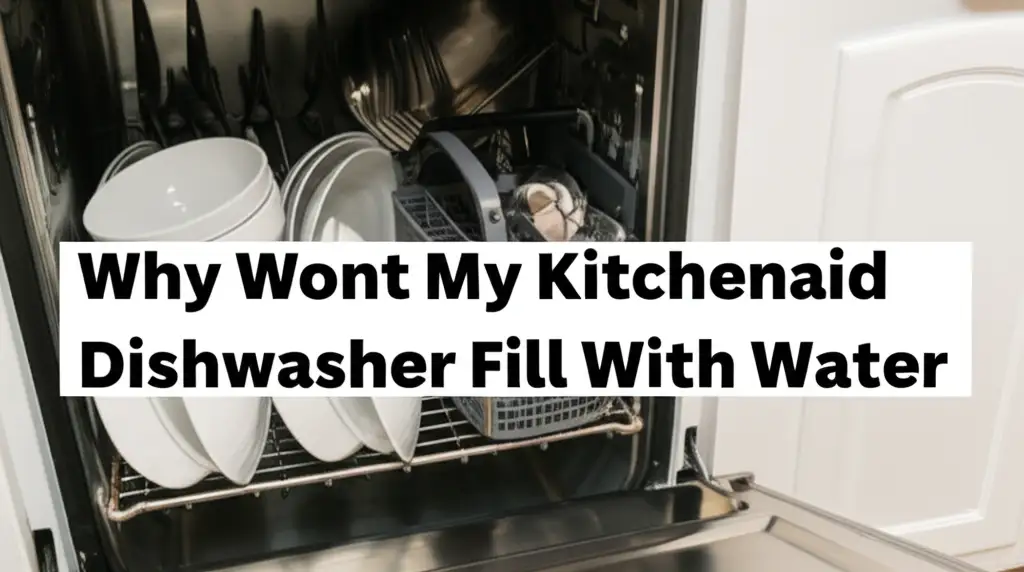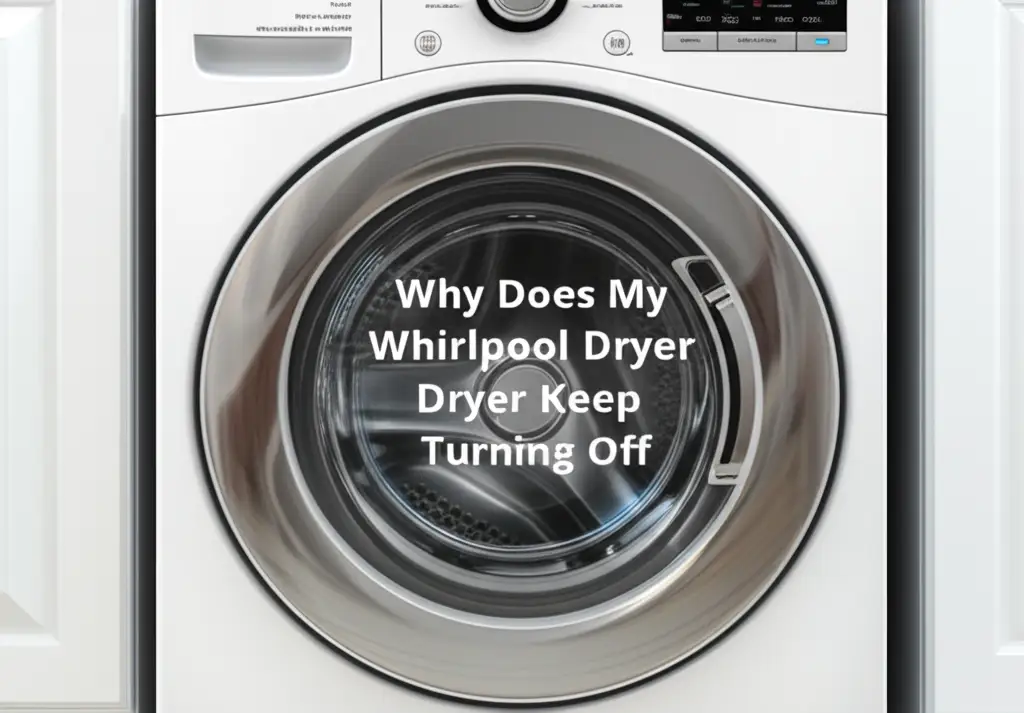· Davia Murnell · Appliance Repair · 20 min read
Why Does My Whirlpool Dishwasher Have Water In The Bottom
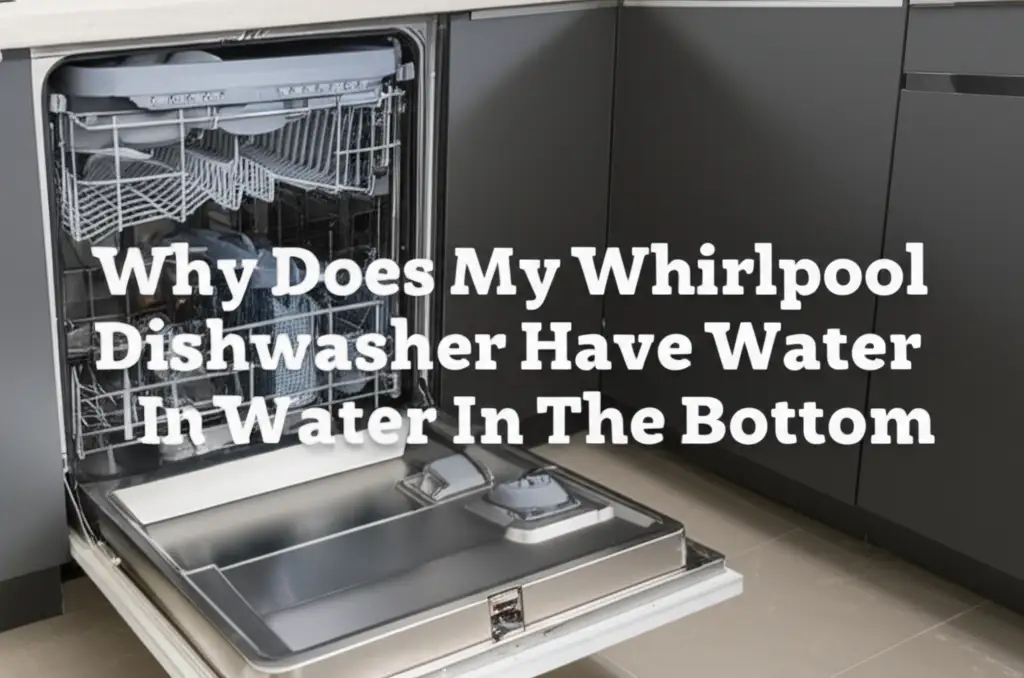
Why Is There Water In My Whirlpool Dishwasher Bottom?
Waking up to standing water in your Whirlpool dishwasher can be frustrating. You just finished a cycle, expecting sparkling dishes. Instead, you find a murky pool at the bottom. This common appliance problem signals a drainage issue. It means your dishwasher cannot properly remove wash water.
I understand how concerning this can feel. A dishwasher full of dirty water is not only unsanitary but also stops you from using your appliance. This problem can stem from various causes. Some reasons are simple clogs. Others point to mechanical failures. Knowing the cause helps you fix it quickly. This article explains why your Whirlpool dishwasher has water in the bottom. We will cover common reasons and offer clear solutions. You will learn to troubleshoot and resolve this issue effectively.
Takeaway
If your Whirlpool dishwasher has water in the bottom, here are key actions:
- Inspect and Clean: Check the drain filter, sump, and spray arms for food debris.
- Clear Hoses: Look for kinks or clogs in the drain hose and air gap.
- Check Disposal: Ensure the knockout plug is removed if connected to a garbage disposal.
- Test Components: Listen for the drain pump and inspect the check valve and float switch.
Concise Answer to Why Your Whirlpool Dishwasher Has Water In The Bottom
Your Whirlpool dishwasher has water in the bottom because of a drainage obstruction or component failure. Common culprits include clogged filters, kinked or blocked drain hoses, issues with the garbage disposal connection, a faulty drain pump, or a malfunctioning check valve or float switch. Resolving these typically involves cleaning or replacing parts.
Understanding How Your Whirlpool Dishwasher Drains Water
A Whirlpool dishwasher performs many tasks to clean your dishes. One critical task is draining water. If water remains in the bottom, it means the drainage process failed. Let’s look at how your dishwasher typically drains water. This helps us find where the problem lies.
The process starts when the wash cycle finishes. The dishwasher collects the dirty water in a part called the sump. This sump is usually located at the very bottom of the dishwasher tub. Inside the sump, there is often a filter. This filter catches large food particles. It stops them from entering the drain system.
Once the water is in the sump, the drain pump activates. The drain pump is a motor-driven device. It forcefully pushes the water out of the dishwasher. The water travels through a drain hose. This hose connects the dishwasher to your home’s plumbing system. Sometimes, it connects to a garbage disposal unit. Other times, it connects directly to a drainpipe under the sink.
A small component called a check valve might be present in the drain line. This valve ensures water flows only one way. It stops dirty water from flowing back into the dishwasher tub. A float switch is another important part. It detects water levels inside the tub. It tells the control board if the water is too high. This helps prevent overflows during the wash cycle and confirms proper drainage. Understanding these parts helps you identify why water sits in the bottom.
The Sump and Filter System
The sump is the lowest part of your dishwasher tub. All water from the wash cycle collects here. This area is designed to funnel water towards the drain pump. It holds water before the pump pushes it out.
Most Whirlpool dishwashers have a filter system in the sump. This system traps food debris. It stops food particles from entering the pump. Filters can be self-cleaning or manual. Manual filters need regular cleaning. A clogged filter is a very common reason for standing water. It prevents water from reaching the drain pump effectively.
The Drain Pump’s Role
The drain pump is the heart of the drainage system. It is an electric motor with an impeller. This impeller spins rapidly. It creates suction and pressure to move water. The pump starts when the control board sends a signal. This happens at the end of a wash or rinse cycle.
Water from the sump enters the pump. The pump then pushes this water through the drain hose. If the drain pump fails, water cannot exit the dishwasher. You might hear a humming sound from a faulty pump. However, no water moves out of the tub. This indicates a problem with the pump itself.
Clogged Dishwasher Filter or Sump Area
A clogged filter is the most frequent reason your Whirlpool dishwasher has water in the bottom. Dishwashers process a lot of food particles. These particles can accumulate over time. They collect in the filter and sump area. When the filter becomes too full, water cannot pass through. The drain pump cannot pull water out. This leaves standing water after a cycle.
I find cleaning the filter often solves the problem immediately. It is an easy maintenance task. Most Whirlpool dishwashers have a removable filter. You can reach it from inside the dishwasher tub. Regular cleaning prevents build-up. It ensures proper drainage and clean dishes. Neglecting this simple step can lead to continuous drainage issues.
Locating and Removing the Filter
Finding your dishwasher filter is straightforward. Open the dishwasher door completely. Look at the very bottom of the tub. You will see a cylindrical or flat filter screen. It usually sits in the center or slightly to one side.
Whirlpool filters often twist out. Some may lift straight up. Check your owner’s manual for specific instructions. The manual shows the exact location and removal method for your model. I always recommend wearing gloves. The filter can be quite dirty.
Cleaning Procedures for the Filter and Sump
Once you remove the filter, clean it thoroughly. Rinse it under warm running water. Use a soft brush or old toothbrush. Scrub away all food particles and grease. You might see slimy residue. This is common.
Also, clean the sump area. Food debris can collect around where the filter sits. Use a sponge or cloth to wipe it clean. Make sure no large particles remain. After cleaning, replace the filter carefully. Make sure it seats correctly. A loose filter can also cause problems. This simple cleaning can often resolve your drainage issue entirely.
Blocked or Kinked Dishwasher Drain Hose
Another common reason for water remaining in the bottom of your Whirlpool dishwasher is an issue with the drain hose. This hose carries the dirty water from the dishwasher to your home’s plumbing. If the hose gets blocked or kinked, water cannot escape. This leads to standing water in the tub. Checking the drain hose is a vital troubleshooting step.
Sometimes the problem is as simple as a bend in the hose. Other times, food debris or grease builds up inside. This creates a blockage. Over time, detergents and minerals can also contribute to clogs. Inspecting the drain hose involves checking its path and condition. Fixing a drain hose issue often requires physical inspection and manual clearing.
Checking the Drain Hose for Kinks
Start by pulling your dishwasher out slightly. This lets you access the back. Look at the drain hose. It connects from the back of the dishwasher to the sink drain or garbage disposal. Check the entire length of the hose.
Look for any sharp bends or kinks. Hoses can kink if the dishwasher was pushed back too far. They can also get trapped against a wall or cabinet. Straighten any kinks you find. Ensure the hose has a gentle slope downwards. This helps water flow naturally. A proper high loop is also essential. This loop prevents dirty water from flowing back into the dishwasher from the sink.
Clearing a Clogged Dishwasher Drain Hose
If there are no visible kinks, a clog might be present inside the hose. First, disconnect the hose from both ends. Place a towel underneath to catch any water. You might need pliers or a screwdriver to loosen clamps.
Once disconnected, inspect both ends for blockages. Use a flashlight to look inside. You can try to clear a clog with a long, thin wire or a plumber’s snake. Gently push the tool through the hose. Break up any debris you encounter. For stubborn clogs, run warm, soapy water through the hose. This can help dislodge grease. Reconnect the hose securely after clearing it. When a dishwasher does not drain, the drain hose is a prime suspect.
Garbage Disposal Connection Problems
Many Whirlpool dishwashers connect to a garbage disposal unit. This is a common setup in kitchens. While convenient, the disposal can sometimes cause drainage issues for your dishwasher. If your dishwasher has water in the bottom, and you have a disposal, check this connection carefully. It’s a frequently overlooked cause of standing water.
The most common issue involves a small knockout plug inside the disposal’s dishwasher inlet. This plug must be removed during installation. If it’s still there, water cannot flow from the dishwasher to the disposal. Another problem can be clogs within the disposal itself. Food scraps can back up into the dishwasher’s drain line.
Ensuring the Knockout Plug is Removed
When a garbage disposal is new, it comes with a knockout plug. This plug is factory-installed. It prevents leaks if no dishwasher is connected. If your Whirlpool dishwasher is newly installed or if the disposal was recently replaced, this plug might be forgotten. It acts as a solid barrier.
To check, disconnect the dishwasher drain hose from the disposal. Use a hammer and screwdriver or pliers. Reach inside the disposal’s inlet port where the hose attaches. You should feel or see a small plastic plug. If present, gently tap it through into the disposal chamber. Retrieve the plug from inside the disposal unit. Reconnect the drain hose securely.
Checking for Disposal Clogs Affecting Dishwasher Drainage
Even if the knockout plug is gone, your garbage disposal can still cause problems. Food debris can accumulate inside the disposal. This buildup can block the path for dishwasher water. Running the disposal regularly helps prevent this.
If you suspect a disposal clog, run your garbage disposal with plenty of cold water. Make sure it runs for at least 30 seconds. This helps flush out any trapped food. If the disposal sounds strained or does not drain well, it might be clogged. For persistent clogs, you may need to clear the disposal. Use a hex key in the bottom center of the disposal to free the motor. Always turn off power to the disposal before working on it.
Faulty Drain Pump Prevents Water Removal
The drain pump is a crucial component in your Whirlpool dishwasher’s drainage system. Its job is to forcefully push all the dirty water out of the dishwasher tub. If you have checked for clogs in the filter, drain hose, and garbage disposal, but still find water in the bottom, a faulty drain pump is a strong possibility. A drain pump can fail in several ways. The motor might burn out. The impeller, which moves the water, could break. Or, the pump might just be jammed by a foreign object.
When the pump fails, it cannot create the necessary suction or pressure. This means water simply sits in the bottom of the tub. You might hear a humming sound from the dishwasher without any water movement. This sound indicates the motor is trying to run but cannot. Replacing a faulty drain pump often resolves the issue entirely. This task can be a bit more involved than cleaning filters but is manageable for many DIYers.
Testing the Dishwasher Drain Pump
Testing the drain pump helps confirm if it is the problem. First, remove any standing water from the dishwasher tub. You can use towels or a wet-dry vacuum. This prevents water spills during your inspection.
Next, start a short drain cycle on your dishwasher. Listen carefully to the sounds. A working drain pump makes a distinct whirring noise as it expels water. If you hear a loud humming but no water draining, the pump motor might be seized or the impeller blocked. If you hear nothing at all, the pump might not be getting power. You can also use a multimeter to check for continuity if you are comfortable with electrical testing. Always disconnect power to the dishwasher before testing electrical components.
Replacing a Malfunctioning Drain Pump
If your testing confirms a faulty drain pump, replacement is the next step. This repair usually involves pulling the dishwasher out from its cabinet. You will need to access the bottom of the unit. The drain pump is typically located near the sump area.
First, disconnect power to the dishwasher. Turn off the circuit breaker. Shut off the water supply line too. Then, carefully tilt the dishwasher or lay it on its back. Locate the drain pump. It connects to the sump and the drain hose. Disconnect the electrical wires and the hoses. Unmount the old pump. Install the new pump following the reverse steps. Ensure all connections are secure. Once installed, run a test cycle to check for proper drainage. If your dishwasher fills with water but does not wash or drain, a faulty drain pump is often the reason. You can find more information about this at Why Does My Whirlpool Dishwasher Fill With Water But Not Wash.
Air Gap Malfunctions on Your Whirlpool Dishwasher
An air gap is a plumbing device. It sits on top of your sink or countertop. Its main purpose is to prevent contaminated sink water from flowing back into your dishwasher. This backflow can happen during a power outage or a clogged sink drain. If your Whirlpool dishwasher has standing water, and you have an air gap, it’s an important component to check. A clogged air gap can prevent your dishwasher from draining properly.
The air gap has two hoses connected to it. One hose comes from the dishwasher. The other hose goes to the garbage disposal or sink drain. Water from the dishwasher travels through the air gap on its way out. If debris builds up inside the air gap, it restricts water flow. This causes water to back up into the dishwasher tub.
What an Air Gap Does for Your Dishwasher Drainage
An air gap creates an actual air break in the drain line. This physical separation is a form of backflow prevention. It is a plumbing code requirement in many areas. When your dishwasher drains, water enters the air gap’s inlet. It then flows out through the outlet.
This design ensures that if the sink drain clogs, the dirty water from the sink cannot siphon back into your clean dishwasher. The water simply overflows from the air gap itself, usually into the sink. However, if the air gap’s internal passages get clogged, water from the dishwasher cannot pass through it effectively. This then causes the water to remain in the dishwasher bottom.
How to Clear a Clogged Air Gap
Clearing a clogged air gap is a simple task. First, locate the air gap on your sink. It is a small chrome or plastic cylinder. It sits next to the faucet. You can usually unscrew or pull off its decorative cap.
Under the cap, you will see an inner cap. Remove this as well. Now you can access the internal workings. Use a small brush or a piece of wire to clear any visible debris. You will often find food particles or greasy buildup. Flush it with water from your sink faucet. You can also disconnect the hoses from the bottom of the air gap for a more thorough cleaning. Run water through both the dishwasher side and the drain side of the air gap. Reassemble the air gap once it is clear.
Dishwasher Check Valve Problems
The check valve is a small, often overlooked component. It plays a critical role in your Whirlpool dishwasher’s drainage system. Its main function is to ensure one-way flow of water. This means it allows dirty water to exit the dishwasher but prevents it from flowing back in. If your Whirlpool dishwasher has water in the bottom, especially after a drain cycle, a malfunctioning check valve could be the culprit.
A check valve can get stuck in a closed position. This stops water from draining at all. More commonly, it gets stuck open or partially open. This allows dirty water from the drain line to flow back into the dishwasher tub. Food particles, grease, or mineral deposits can cause the valve to stick. Inspecting and cleaning this valve can resolve the backflow issue.
Locating the Check Valve in Your Dishwasher
Finding the check valve requires accessing the drain system. Its exact location can vary slightly by Whirlpool model. However, it is typically located near the drain pump. Sometimes it is inside the drain pump housing. Other times, it sits at the end of the drain pump where the drain hose connects.
You will likely need to pull the dishwasher out from its cabinet. You also need to access the bottom panel. Consult your Whirlpool dishwasher’s service manual or parts diagram. This will show you the precise location of the check valve. It usually looks like a small rubber flapper or a spring-loaded gate.
Inspecting and Cleaning the Check Valve
Once you locate the check valve, carefully remove it. You might need a screwdriver or pliers. Check the valve for any visible debris. Look for food particles, grease, or mineral buildup. These can prevent the valve from seating properly.
Inspect the rubber flapper or gate. It should move freely. It should also seal completely when pushed back into place. If it is stiff, torn, or clogged, it will not work correctly. Clean the valve thoroughly with warm, soapy water. Remove all debris. If the valve is damaged, replace it with a new one. Reinstall the clean or new check valve. Make sure it is oriented correctly for one-way flow. This should stop dirty water from re-entering the tub.
Issues with the Dishwasher Float Switch
The float switch is a safety device in your Whirlpool dishwasher. It sits at the bottom of the tub. Its job is to detect the water level inside the appliance. If the water level becomes too high, the float switch tells the control board. This signal either stops the water inlet valve or activates the drain pump. It prevents your dishwasher from overflowing.
If your dishwasher has standing water at the bottom, a problem with the float switch is a less common but possible cause. The float switch can get stuck in the ‘up’ position. This makes the dishwasher think there is still too much water inside. It might continuously try to drain. Or, it could prevent the next cycle from starting correctly. Conversely, if it’s stuck down, it might not activate the drain pump when needed.
How the Float Switch Works
The float switch is a simple mechanism. It consists of a plastic or styrofoam float. This float moves up and down with the water level. As the water level rises, the float lifts. This movement activates a small switch located beneath it.
When the float reaches a certain height, the switch sends an electrical signal. This signal goes to the dishwasher’s main control board. The board then takes action. It might shut off the water inlet valve. Or, it might trigger the drain pump. This prevents overfilling. If the float is stuck or the switch is faulty, the dishwasher’s water level sensing becomes inaccurate.
Troubleshooting a Stuck or Faulty Float Switch
To troubleshoot the float switch, first empty any standing water from the dishwasher. Locate the float assembly at the bottom of the tub. It usually looks like a small plastic cap or tower. Gently push the float down and release it. It should move freely up and down without sticking.
If it sticks, food debris or grime might be trapping it. Clean around the float assembly thoroughly. Use a brush or sponge. Ensure nothing obstructs its movement. If the float moves freely but the problem persists, the switch itself might be faulty. You can test the switch’s continuity with a multimeter. If there’s no continuity when the float is pressed, the switch likely needs replacement. A faulty float switch can sometimes cause issues where the dishwasher fills but does not wash or drain properly. For similar issues, see Why Does My LG Dishwasher Have Water In The Bottom.
Improper Installation or Leveling Issues
Sometimes, the reason your Whirlpool dishwasher has water in the bottom is not a broken part or a clog. It could be due to how the appliance was installed. Improper installation or poor leveling can directly affect the dishwasher’s ability to drain completely. These issues disrupt the natural flow of water towards the drain pump and out of the machine.
When a dishwasher is not level, water can pool in certain areas of the tub. It might not fully reach the sump where the drain pump is located. Similarly, issues with the drain hose routing during installation can create problems. A drain hose needs a specific configuration, like a high loop, to prevent backflow and aid drainage. These installation nuances are often overlooked but are crucial for proper function.
Leveling the Dishwasher for Proper Drainage
A dishwasher must sit perfectly level to drain correctly. If it leans forward, backward, or to either side, water may not gather fully in the sump. This leaves puddles in the bottom of the tub. Small amounts of standing water are normal in the sump area to keep the pump seal wet. However, significant pooling outside the sump indicates a problem.
To check leveling, place a spirit level inside the dishwasher tub, both front-to-back and side-to-side. Adjust the dishwasher’s leveling legs as needed. Most dishwashers have adjustable legs at each corner. You can usually turn them clockwise or counter-clockwise to raise or lower. Ensure the dishwasher is stable once leveled.
Reviewing Drain Line Connection Points
The drain line setup is critical for proper drainage. The most common installation error is not having a high loop in the drain hose. A high loop means the drain hose rises to the underside of the countertop before descending to the drain connection. This creates an air gap effect. It prevents dirty sink water from siphoning back into the dishwasher.
Without a high loop, water from the sink can flow directly into the dishwasher. This leaves standing water. Check if your drain hose forms a high loop. If it connects to a garbage disposal, ensure the hose enters the disposal at a high point. Secure the loop with a zip tie or hose clamp to the underside of the counter. Also, confirm the drain hose is not too long, causing excess slack that can create low spots for water to pool.
Other Common Whirlpool Dishwasher Drainage Concerns
Even after checking the main culprits, your Whirlpool dishwasher might still have water in the bottom. While less common, other factors can contribute to drainage issues. These often relate to usage habits or minor internal malfunctions. Addressing these can fine-tune your dishwasher’s performance. It ensures it drains completely every time.
These secondary concerns include using too much detergent, which can create excessive suds. Suds can interfere with pump operation. Additionally, neglecting to scrape large food particles from dishes can overwhelm the filter. Very hot water can also play a role, as extremely hot water can sometimes cause issues with certain dishwasher components or plumbing materials over time. Being aware of these smaller factors helps you maintain your appliance better.
Detergent Overuse and Excessive Suds
Using too much dishwasher detergent is a common mistake. It can lead to excessive suds. These suds can create problems for your dishwasher’s drain pump. The pump is designed to move water, not a foamy mixture. Suds can prevent the pump from generating enough pressure. This stops it from effectively
- Whirlpool Dishwasher Repair
- Dishwasher Not Draining
- Standing Water Dishwasher
- Dishwasher Troubleshooting
- Appliance Maintenance


